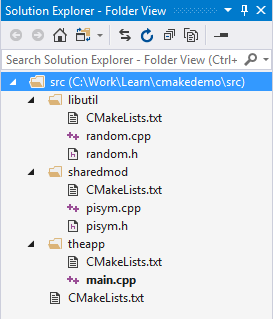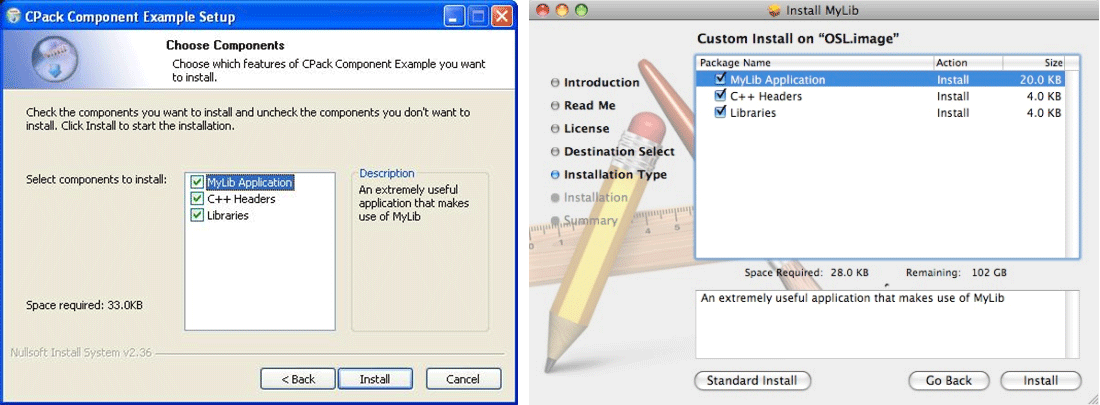
Defining such project properties globally makes it easier to manage the project with all its targets. Defining such properties globally in the top-level CMakeLists.txt file prevents scenarios where public headers of a dependent target causing a depending target not to compile because the depending target uses stricter compiler options.


Define project properties globally.įor example, a project might use a common set of compiler warnings. Use the same principles for CMakeLists.txt and modules as for the rest of the codebase. Treat CMake code like production code.ĬMake is code. Modern CMake is only available starting with version 3.0.0. General Use at least CMake version 3.0.0. If you are interested in the history and internal architecture of CMake, have a look at the article CMake in the book The Architecture of Open Source Applications. This text is heavily influenced by Mathieu Ropert’s and Daniel Pfeifer’s talks. The next video that goes more into the details of modern CMake is Daniel Pfeifer’s C++Now 2017 talk Effective CMake ( slides). The modular design ideas in this talk are based on the book Large-Scale C++ Software Design by John Lakos. It provides a thorough explanation of what modern CMake is and why it is so much better than “old school” CMake. Go read it now.Īfter that, watch Mathieu Ropert’s CppCon 2017 talk Using Modern CMake Patterns to Enforce a Good Modular Design ( slides). LLVM’s CMake Primer provides a good high-level introduction to the CMake syntax. That's because CMake keep a sane install destination in it's CMAKE_INSTALL_PREFIX variable.For a brief user-level introduction to CMake, watch C++ Weekly, Episode 78, Intro to CMake by Jason Turner. Note that even though we just specified bin in the install statement, the program is correctly installed in /usr/local/bin. (Here I show the full output from the sudo make install Then, install your beautiful program on the local machine. Make a release build (you probably don't want to install debug binaries - right?)

From the Linux command-line, it works like this: If you don't do anything, cmake will now create an install target for your build. This may be in the root CMakeLists.txt file, or in a CMakeLists.txt file in a source directory where you keep your sources. This example show how to install the binary for my static blog generator: Just after the add_executable blah blah statement, where you declare what you want to build, and how, add the one-liner install statement. So - how do you make cmake install your beautiful little command-line program? It's actual quite simple. [[ARCHIVE|LIBRARY|RUNTIME|FRAMEWORK|BUNDLE| For example, the install statement reads like: It can also install them.ĬMake comes with extensive documentation, and few or no examples on how to use the different options.

CMake can do more than just build your software projects.


 0 kommentar(er)
0 kommentar(er)
